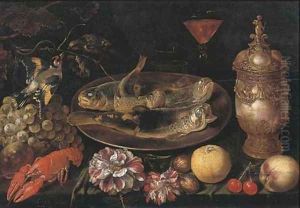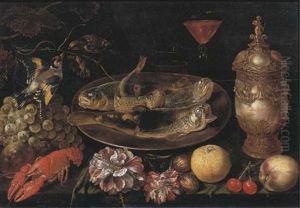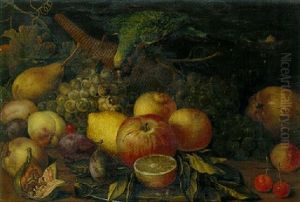Ernest De Lairesse Paintings
Gérard de Lairesse, often known as Gerard or Ernest De Lairesse, was an important Dutch Golden Age painter and art theorist. Born in Liège in 1640 to Renier de Lairesse, who was also a painter, Gérard moved to the Netherlands in his early twenties, where he would spend the remainder of his career. Despite the initial 'Ernest' being a common error, his correct name is Gérard de Lairesse.
De Lairesse was well-versed in various subjects, such as poetry and mythology, which often influenced his work. He initially gained recognition in Amsterdam, where he moved around 1667, and quickly became a popular artist for patrician commissions. His style was heavily influenced by the classical idealism of artists like Poussin and was quite distinct from the prevailing Baroque style in Dutch art at the time, which was characterized by artists like Rembrandt.
De Lairesse's work spanned a variety of genres, including history painting, portraiture, and decorative frescoes. He was particularly known for his skillful use of allegory and historical subjects. His refined and elegant figures reflected his study of classical sculpture and ancient history. In addition to his paintings, he designed tapestries, illustrated books, and provided designs for engravings.
In the latter part of his life, de Lairesse suffered from congenital syphilis, which eventually led to his blindness in the 1690s. Despite this significant challenge, he continued to work by dictating his ideas to pupils and assistants. He also authored an important treatise on art, 'Groot Schilderboek' (Great Book of Painting), which was published in 1707. This work is significant for its insights into the theory and philosophy of art, as articulated by a practicing artist of the time.
De Lairesse's influence extended beyond his lifetime, affecting the aesthetic discussions and teachings of later generations. He died in Amsterdam in 1711. His approach to art marked a transition from the Baroque style to the more restrained and formal Classicism that would dominate the 18th century.


